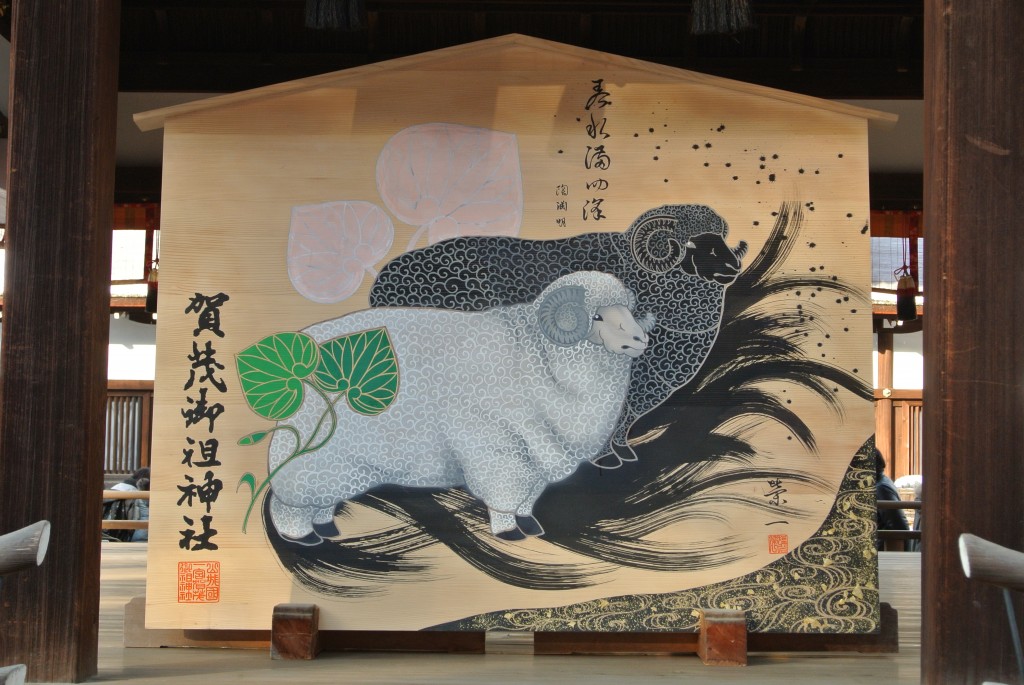
I’ve been told that the New Year snowfall in Kyoto has been the largest for over 50 years. It may have created discomfort for some, but it gave the city a suitably wintry garb and made this year’s ‘first visit to the shrine’ (hatsumode) something special.
I paid a visit to nearby Shimogamo Shrine, which was comfortably crowded and full of atmosphere (unlike the more popular Fushimi Inari which by all accounts is most uncomfortably crowded). Steaming stalls set up beneath the sheltering Tadasu no mori trees beckoned visitors as they made their way into the shrine, which unusually boasts shrines dedicated to the animals of the Chinese Zodiac cycle. The queue to pay respects to the two main kami stretched out of the inner compound, and there were long queues too both at the ‘enmusubi‘ (love connection) shrine and for the warming hot sweet saké laced with ginger (amazaké). The good mood was contagious, as if the white purity of the snow helped provide an extra element of joy.
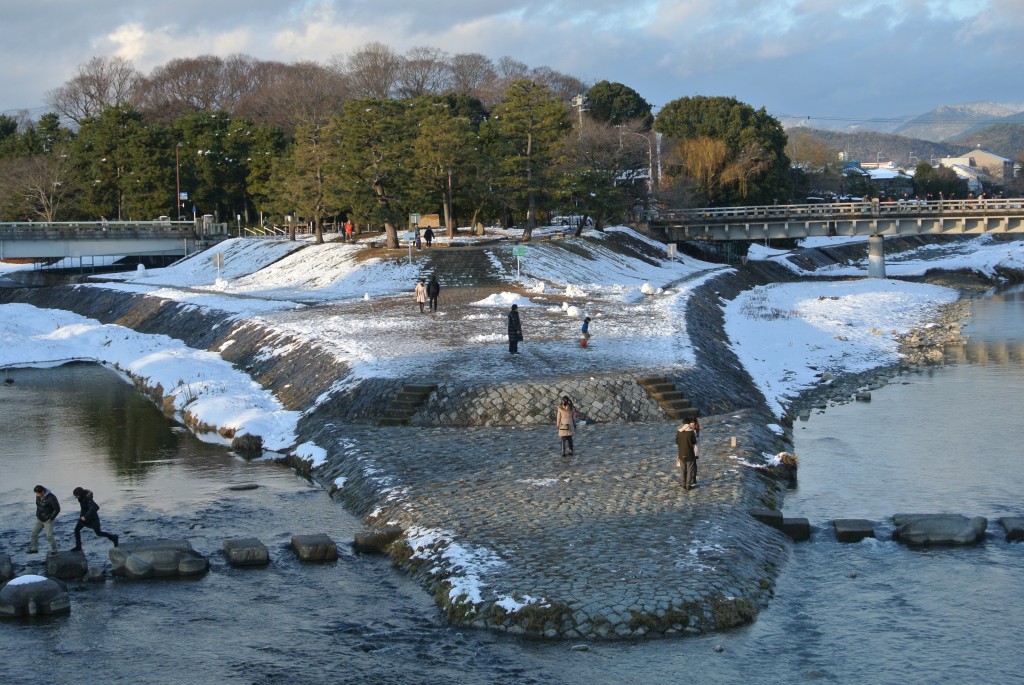
The shrine stands amongst woodland at the junction of the Kamo and Takano rivers
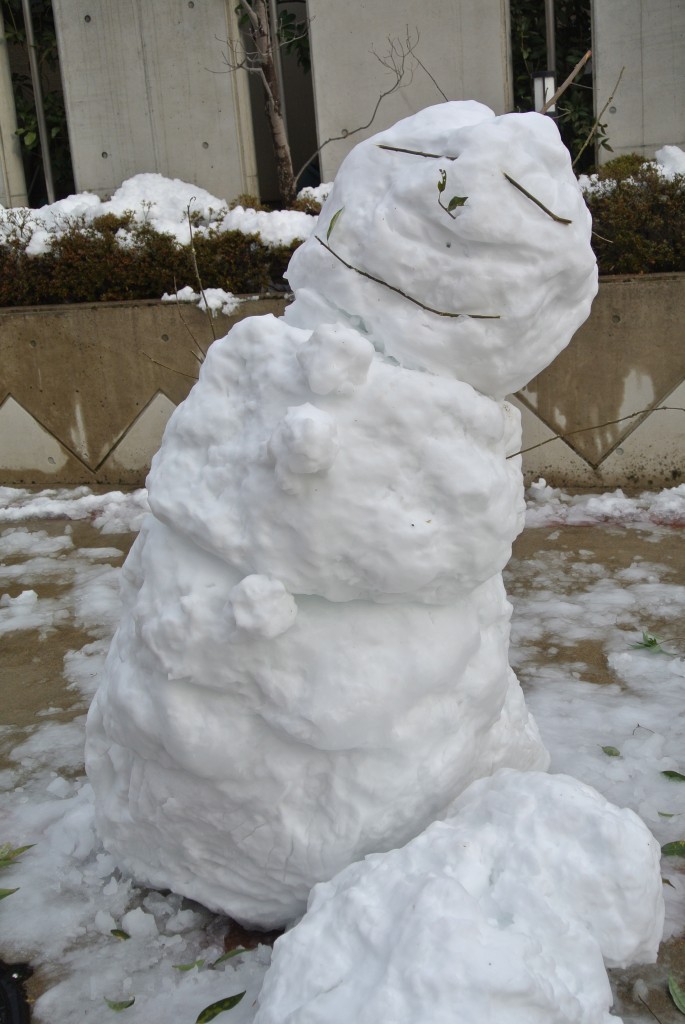
There was a festive feel for this year's hatsumode...
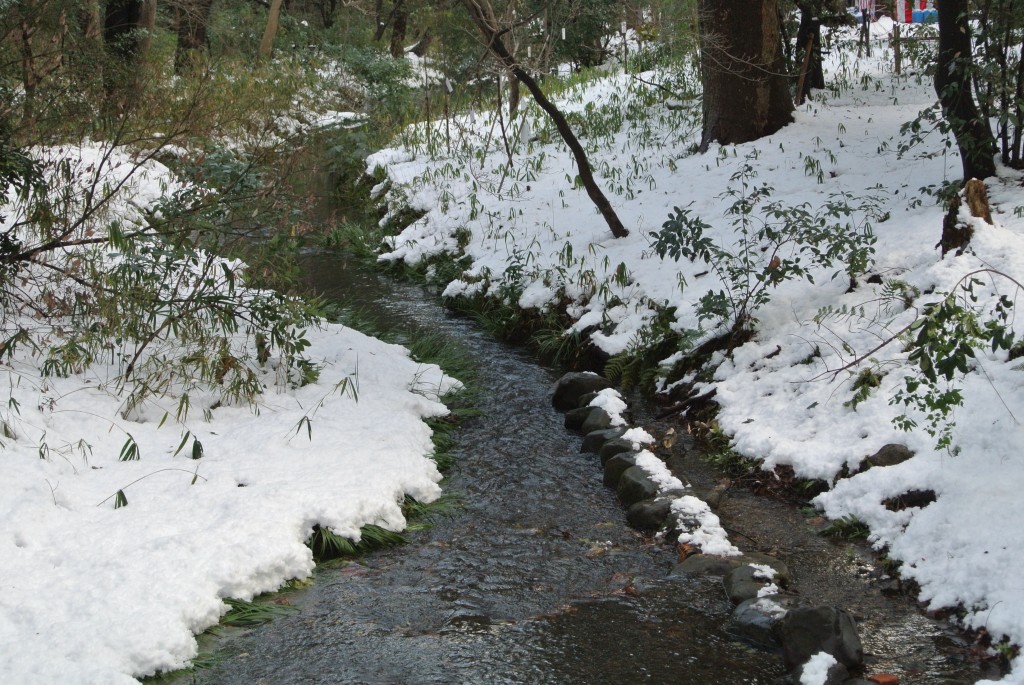
... and the woods looked pristine
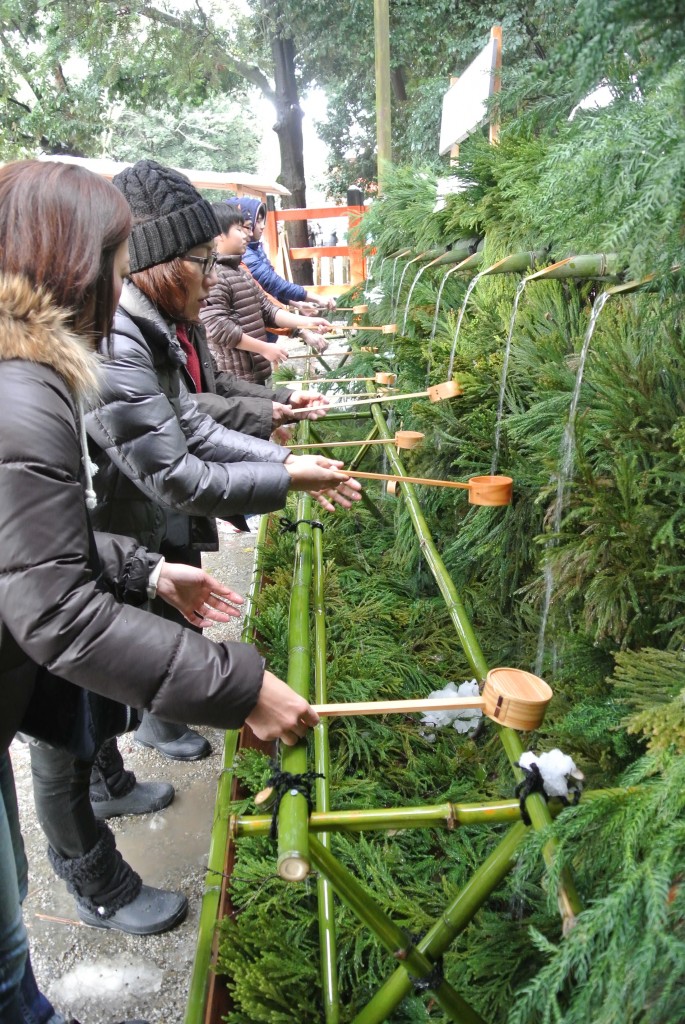
An attractive temporary temizuya was set up...
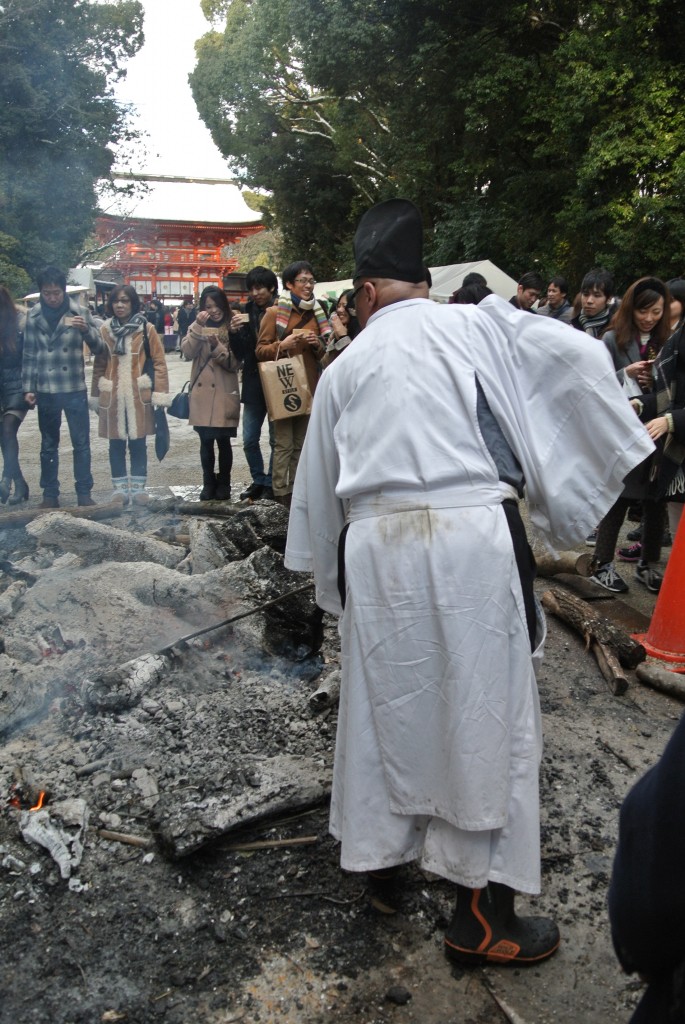
... and a large fire kept people in a warm and jovial mood
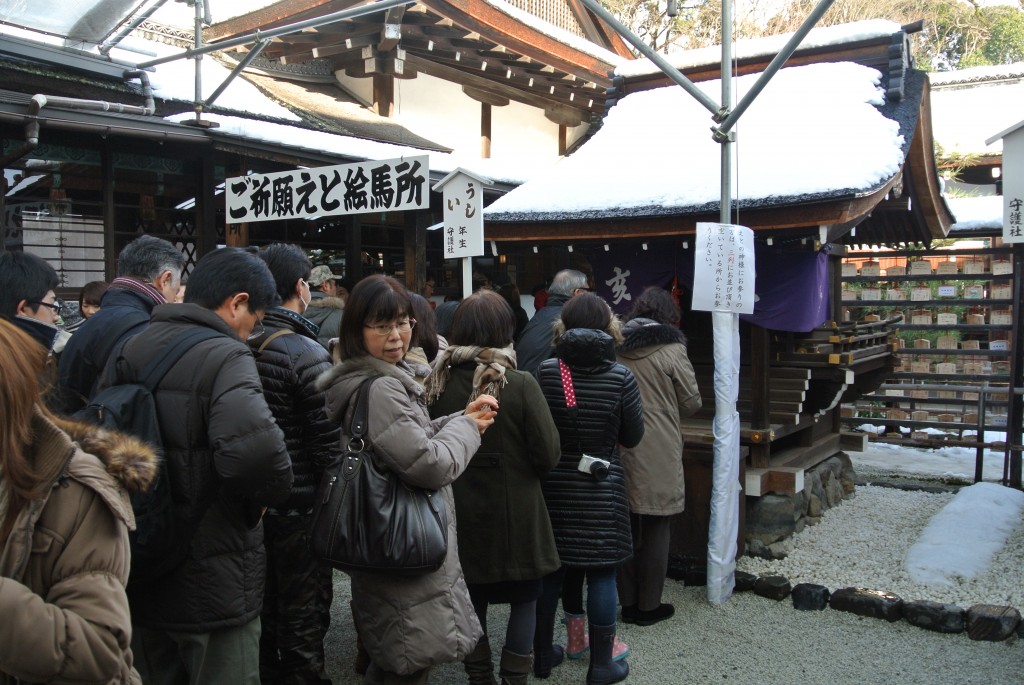
There were queues for the Chinese zodiac shrines
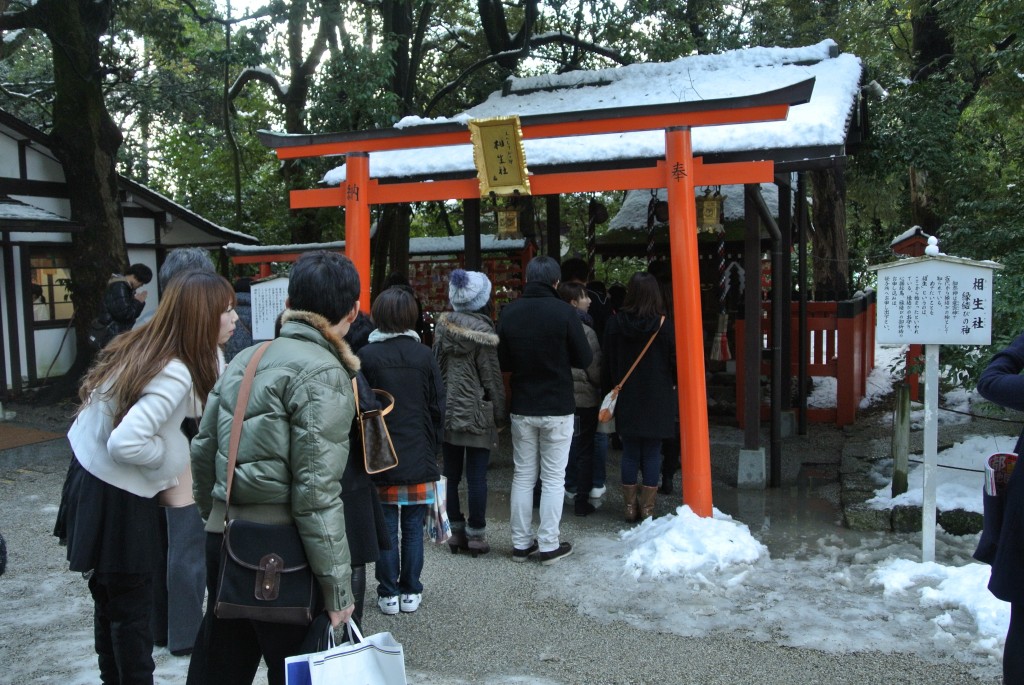
... and young people at the enmusubi (love connection) shrine
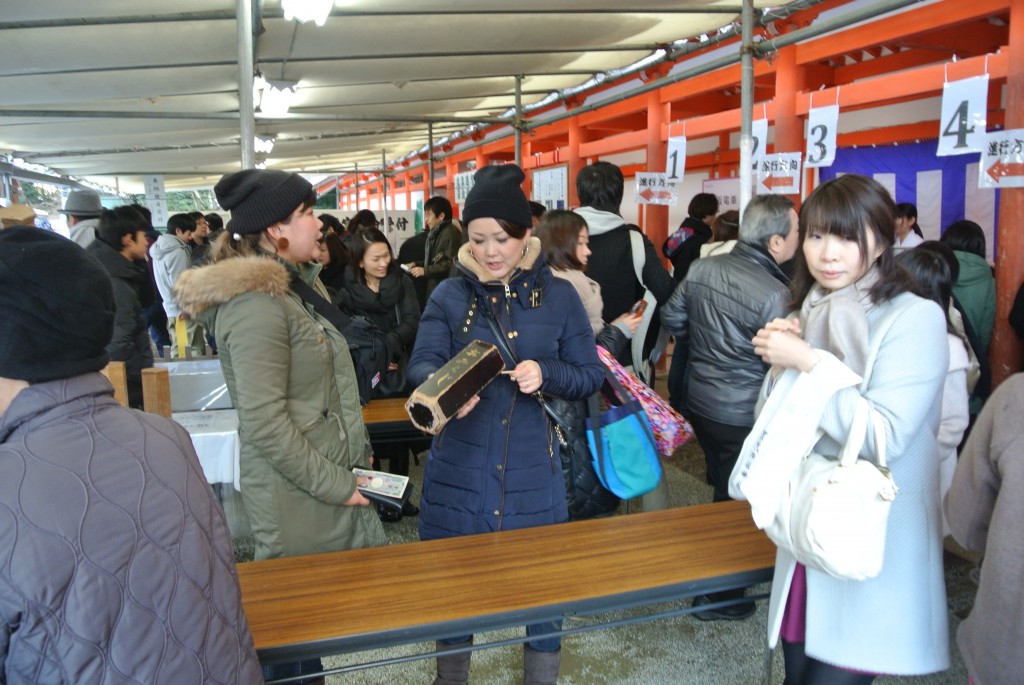
Fortune-telling was a big draw (literally!)
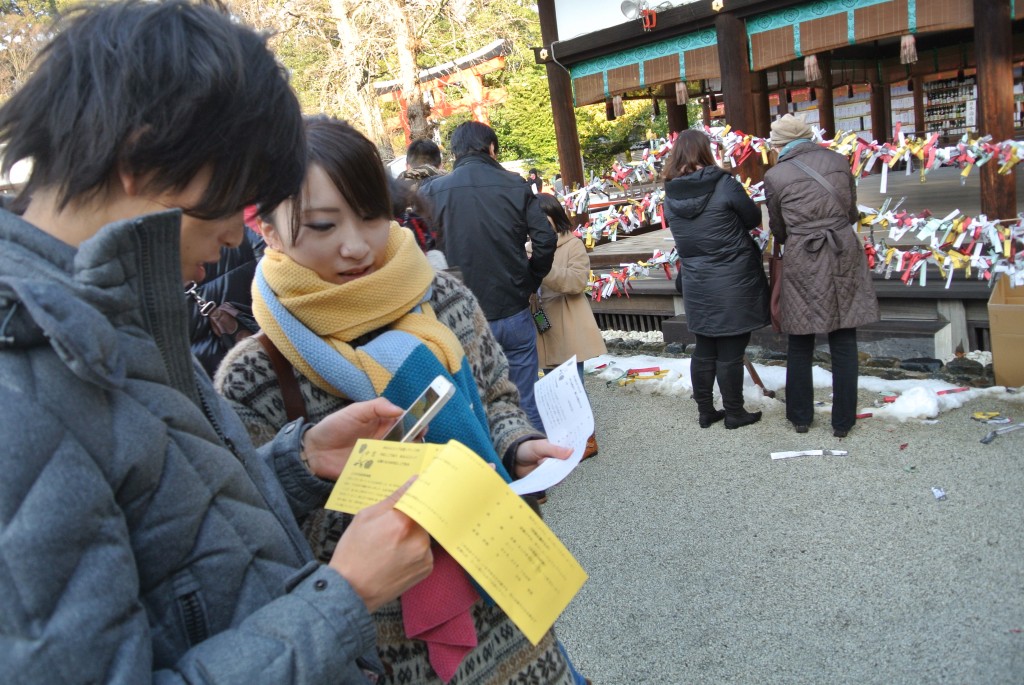
Some needed help reading their fate
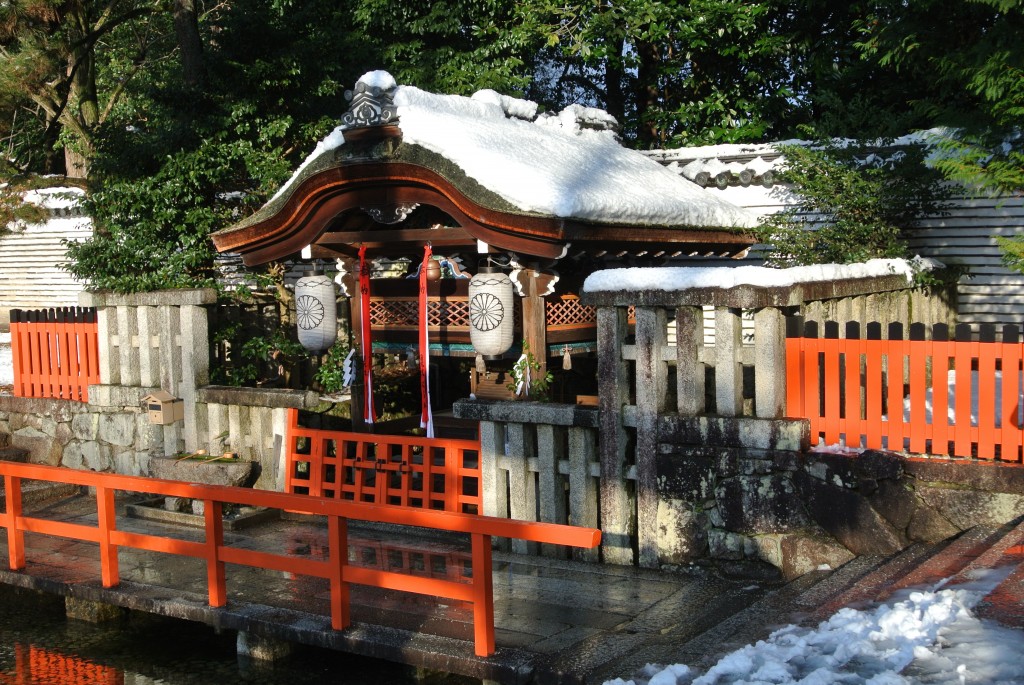
Meanwhile, the Mitarashi subshrine was a haven of tranquility in the afternoon sunlight. The purity of the water it stands over was enhanced by the fresh chill of the melting snow.
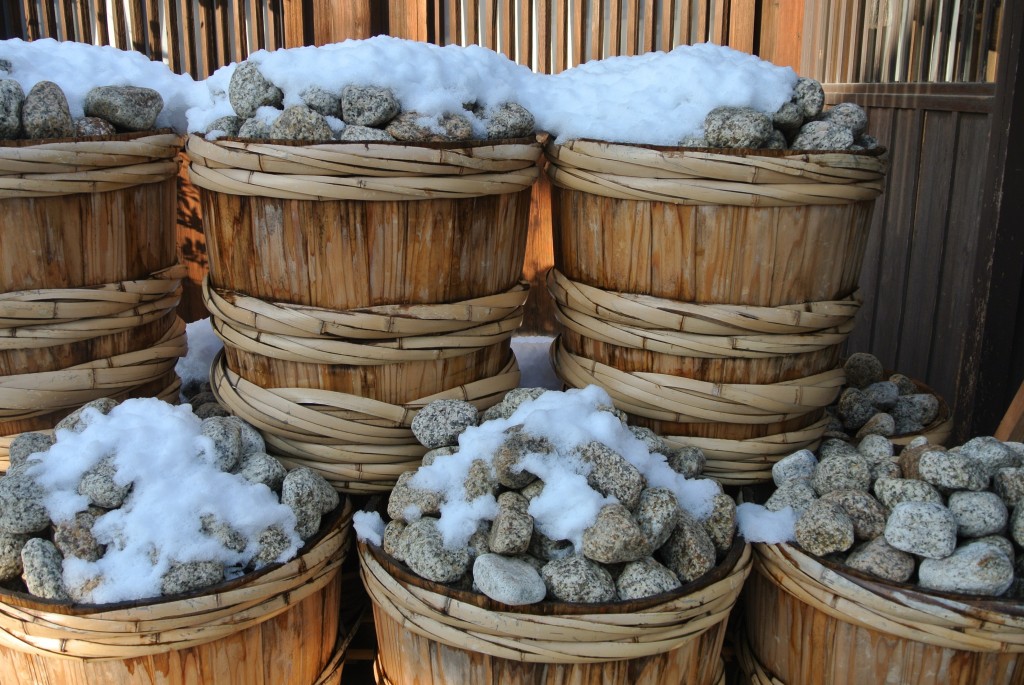
Baskets of white stones told of the coming ceremony this year to complete the 'shikinen sengu' cycle of repair and restoration currently being carried out at the World Heritage shrine.
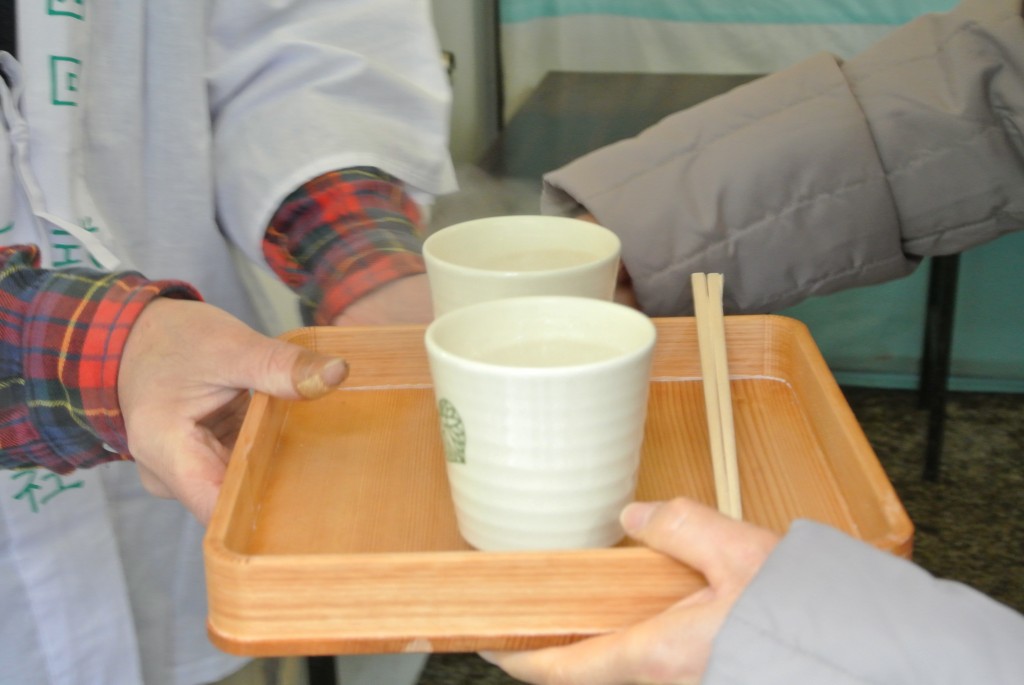
And to finish off the visit a couple of cups of delicious warm ginger saké. The year of the sheep promises to be a good one!!
****************************************
For more photos of the shrine in snow, see the Deep Kyoto post here.

Than you for this beautiful post, John. Carolyn and I both felt an ache in our hearts this morning as your pictures reminded us of how much we miss Kyoto and our life there. But, as Basho famously said, Even in Kyoto… I long for Kyoto.
Akemashite Omedeto Gozaimasu.
That warm ginger sake sounds good! I’ve only had the opportunity to visit Shimogamo Shrine once, late in the day after a bracing trip to Mt Kurama last May. I was wondering at the time about the number of small shrines with purple curtains at Shimogamo Shrine. From your post it appears that they represent signs from the Chinese Zodiac. I’ll know better next time (obviously I didn’t have the Shinto Shrine book with me at the time!). Last year the Shrine had a beautiful large ema painted with a horse. I see that it has now been replaced with an equally impressive image of two sheep to reflect the change to the Year of the Sheep. As sheep and Australia have a long association through the wool industry, I’ll aim to buy at least one small ema on my next visit.
As an Australian, you’ll surely want to collect a few sheep! The large Shimogamo ema this year is interesting for its depiction of a white and black sheep – a yin-yang balancing. I’m familiar with white and black horses having been presented at shrines in the past in connection with the weather (black was to pray for rain in times of drought). It’s the first time I’ve seen a pair of animals like this in the depiction of the zodiac animals though…